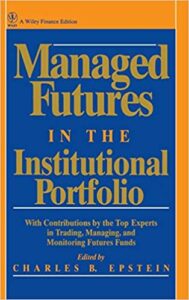Private Equity Definitions
Angel investors–Wealthy individuals with operating experience typically invest $50,000 to $1 million in exchange for equity in an entrepreneurial enterprise. Angels are generally passive investors but may sit on the board and offer their experience and advice during the company’s initial growth stages.
Arbitrage – A strategy that exploits mispricings between identical or similar financial instruments on different markets or other market forms.
Buyout -An equity investment that often garners majority control in a company. When significant debt finances the deal, it is called a “leveraged buyout” (LBO). When company management leads this effort, it is called a “Management Buyout” (MBO).
Buyout firms purchase established companies and employ leverage, cost-cutting, and internal growth techniques to increase company value.
Capital Call – When a private equity manager asks investors to commit additional capital, usually a pre-agreed-upon amount of their committed capital.
Capital Structure Arbitrage – While a company is restructuring, the prices of its different financial instruments may become mispriced relative to each other. This presents an opportunity for capital structure arbitrage. Specialists in distressed securities purchase the undervalued securities and short the overvalued securities to capitalize on the spread differential.
Capital Under Management – The committed capital in the firm’s previous and current investment funds. Unlike public equity managers, not all of a Private Equity fund’s capital under management is available for investment.
Carried Interest–the Private Equity manager’s incentive compensation. It can range from 10% to 30% of the firm’s investment profits. Often, carried interest is paid after investors receive their original investment back plus a preferred return.
Clawback: Funds the General partner makes to the Fund after the final liquidating distribution.
Closed-End Fund Arbitrage—A strategy that seeks to exploit the spreads between the securities in a closed-end fund and the value of the fund itself. This strategy is based on the often illiquid nature of closed-end funds, which leads to undervaluations.
Co-Investment – A limited partner’s investment in an operating company made in parallel with the manager.
Committed Capital – Capital the investors have collectively or individually agreed to provide. (See also “Paid in Capital.”)
Convertible Arbitrage – Convertible arbitrageurs are simultaneously long the convertible securities and short the underlying of the same issuer (or occasionally vice versa). This allows them to trade the spread between the two securities. Returns are produced based on the difference between cash flows collected through coupon payments, short interest rebates, and cash paid out to cover dividend payments on the short equity positions. Returns also result from the convergence of valuations between the two securities.
Deal flow—The process of sourcing and screening potential investment opportunities.
Direct Investment – Equity investment made to the operating company, not via a partnership or fund.
Distressed Securities – Fund managers invest in companies’ debt, equity, or trade claims in financial distress and bankruptcy. The securities of companies needing legal action or restructuring to revive financial stability typically trade at substantial discounts to par value, which attracts investments when managers perceive a turnaround will materialize.
Exit Strategy—The process by which an investor can cash out of their investment. This involves raising cash from other sources, often from an initial public offering or leveraged buy-out.
Expansion Capital—Equity or equity-like investments made in private or public companies with proven business models that have reached or are approaching profitability. Investments are used to expand the companies’ operations.
Fixed Income Arbitrage – The asset-backed securities arbitrageur seeks to profit from price anomalies between related interest rate securities. The mortgage-backed market is primarily US-based, over-the-counter, and remarkably complex. In general, these strategies tend to be slightly leveraged. However, managers with higher leverage ratios tend to have more liquid underlying securities with higher average credit quality.
Guarantee Return Fund — Another name for a hedge fund. The name is European in origin.
Internal Rate of Return (IRR)—The rate of return that would make the present value of future cash flows, plus the final market value of an investment or business opportunity, equal the current market price. Also called dollar-weighted rate of return, this is the most common performance measure used in Private Equity.
J-Curve— In the first few years of a Private Equity investment, portfolio investments absorb more management fees and organizational expenses than they accrue value. As the fund matures, it produces a positive return, typically within three to five years.
Leverage–The use of margin in a strategy that can result in exaggerated gains or losses. It is also known as “gearing” in Europe.
Managed Futures — A strategy primarily using futures contracts to pursue  outperformance. This is one of the oldest sub-categories of hedge fund investing.
outperformance. This is one of the oldest sub-categories of hedge fund investing.
Market Neutral (equity)—This investment strategy seeks to exploit equity market inefficiencies and usually involves simultaneously long and short-matched equity portfolios of the same size within a country. Market-neutral portfolios are designed to be beta-neutral and currency-neutral. Well-designed portfolios typically control for industry, sector, market capitalization, and other factors. Leverage is commonly applied to enhance returns.
Merger Arbitrage—In a merger or risk arbitrage, the manager takes a long position in company stock acquired in a merger, leverage buyout, or takeover and simultaneously takes a short position in the acquiring company’s stock.
Mezzanine investors invest in equity or equity-like securities of established companies. Mezzanine financing is considered attractive since it can provide capital preservation and regular payment features for debt, combined with the upside appreciation of equities. The term also refers to the later or bridge stage in a company’s life’s pre-public offering or pre-merger/acquisition phase. Mezzanine debt holders participate in equity appreciation through conversion features like rights, options, or warrants.
Over-the-Counter—Trades made outside of a regulated exchange using capital from a market-making firm to construct a highly customized trade or hedging strategy, often involving instruments and risks that are not exchange-traded.
Paid-in Capital–The amount of capital a limited partner has delivered to a venture capital fund. It is also called “committed capital.”
Secondaries–This occurs when Private Equity or restricted holdings in a portfolio company are sold to other investors. They also involve investments in a previously-owned limited partnership or previously-owned funds limited partnerships via a secondary fund.
Seed Stage – The company’s level at which it has not formally started business or generated initial revenues.
Special Situations—Also known as “economically targeted investments,” these can include investments in oil and gas exploration, lumber operations, or social investments.
Stages of venture capital investing— These stages are seed investment, start-up round, early stage financing, expansion stage financing, bridge financing, IPO, and LBO.
Statistical Arbitrage – This occurs when a manager follows a low-risk, market-neutral analytical equity trade to capture momentary pricing aberrations.
Value at Risk (VaR)–a management tool developed to provide a single number that can encapsulate information about a portfolio’s risk. It is the estimate of loss on a portfolio that is expected to be equaled or exceeded with a given, small probability.
Venture Capital firms invest in innovative companies with underdeveloped products or revenues and perform several critical roles for these companies. Among the many companies created by venture capital firms were Apple Computers, Federal Express, Genentech Corp., Lotus Development Corp., and many others.
Venture Capital Fund—A fund or partnership typically invests 20-30 investments in venture capital companies.
Vintage Year—The year a private equity fund is formed, and the first capital takedown occurs. This date is important because it is used to assess relative fund performance, as year-to-year changes in market conditions can impact fund performance.
Volatility Arbitrage – A strategy based on exploiting a mispricing in the implied volatility of an option.











